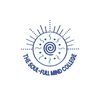
Chris Kelly
OSTEOPIC - Osteopathic, Pain & Injury Clinic
This account is currently inactive on Natural Therapy Pages, but you can browse from hundreds of other practitioners in your local area.
Search for practitioners in Kingston Beach
OSTEOPIC - Osteopathic, Pain & Injury Clinic
Servicing area
Kingston Beach, TasmaniaFocus areas
Posture
Pregnancy support
Pelvic floor
Stress Management
Childbirth
Muscle tension
Welcome to OSTEOPIC - Osteopathic, Pain & Injury Clinic
At OSTEOPIC (Osteopathy Hobart), we aim to treat people of all ages and backgrounds who present with various complaints and conditions. The primary objective here at the clinic is to address patient care, comfort and management, whilst continuing to maintain a high standard of professional excellence.
WHAT IS OSTEOPATHY AND HOW CAN IT HELP ME?
Osteopathy is an holistic and practical therapy of manual medicine, which focuses on restoring and maintaining optimal health. This whole body system of treatment is based on unique biomechanical principles that are applied to the structure and function of mechanical conditions within the body.
Osteopaths are highly skilled at identifying and diagnosing dysfunction or alterations within the musculoskeletal system. These problems may alter the circulation of blood or lymphatic drainage, and disrupt the nerve supply to any part of the body, consequently causing a negative effect on health.
Osteopathy recognises that the body is one functional unit with each part being dependent upon other parts; therefore, one region may influence or be influenced by another region. For this reason, Osteopaths observe that symptoms (e.g. pain, stiffness and inflammation) in one area may be caused by dysfunction in another area, and aim to identify the primary cause, rather than treat the symptoms at a seemingly unrelated location. This philosophy is applied to consider the whole person for the prevention, diagnosis, and treatment of injuries and illness using manual and physical therapies.
Osteopaths use a wide range of "hands on" techniques to treat musculoskeletal and other functional problems in order to restore the body's structure and function to a state of balance. These techniques are gentle and considered very safe. Treatment works in a subtle Manner with the body's structure to enhance and accelerate the healing process.
As Osteopaths treat the whole person you may be offered personal advice on stretching and strengthening exercises, posture, diet, lifting procedures, ergonomic assessment and stress management.
Treatment techniques include:
- Soft Tissue Technique (massage)
- Deep Inhibitory Pressure (trigger point release)
- Stretching
- Joint Articulation and Mobilisation (gentle passive movements restoring mobility)
- Muscle Energy Technique (contract-relax type exercises against resistance to improve joint flexibility and reduce muscle tension)
- Craniosacral Technique/Osteopathy in the Cranial Field/IVM (gentle release of tissues using the fluid forces of the body)
- Joint Manipulation/Adjustment (a form of articulation with a rapid thrust)
- Functional (moving joints or whole structures to a position of "ease" or balance)
The World Health Organisation (WHO) recognises the Osteopathic concept of somatic dysfunction as being scientifically proven, and the British Medical Association recognises Osteopathy as a discrete medical discipline.
CRANIAL OSTEOPATHY
Cranial osteopathy (also known as craniosacral, cranial, involuntary mechanism (IVM), osteopathy in the cranial field) is a subtle osteopathic treatment technique that augments the release of tension and strains throughout the body, including the head.
Cranial osteopathy is a gentle and light, yet powerful and extremely effective approach for the treatment of symptoms of a wide array of conditions. It is suitable for people of all ages, from the new born to the elderly patient.
The concept of cranial osteopathy originates from the principles developed by the American osteopath Dr. William G. Sutherland as an extension to the osteopathic approach. The objectives of cranial osteopathy are to improve mobility within articular (joint) restrictions, reduce membranous tension, improve circulation; reduce potential for nerve entrapment at the base of the skull and improve the vitality of the cranial rhythmical impulse. It is viewed that achieving this improves the level of wellness of the patient.
OSTEOPATHY FOR PREGNANCY
Pregnancy is a unique and powerful experience whereby significant physical, hormonal and emotional adaptations take place. A common misconception is that women cannot receive manual treatment throughout pregnancy. However, patients often report a quicker recovery post-labour if treated during pregnancy.
An important consideration for the preparation for childbirth is ensuring that the mother's pelvis is structurally balanced and capable of allowing easy passage of the baby along the birth canal. Following childbirth the body has to recover from the changes that occurred during pregnancy and the effects of labour and delivery. Caring for a newborn can place significant demands on the back, such as nursing in poor positions, manoeuvring car seats, reaching into cots and carrying children etc.
Your osteopath may advise on posture, prescribe pelvic floor and post-pregnancy exercises and demonstrate some self-help techniques for the mother and her partner to do during labour.
Nearby Practitioners
View all
The Soul-Full Mind College
Focus areas
Wellbeing
Mental health
Depression

Holistic Psychology
Focus areas
Pain management
Chronic pain
Family conflict

Beth Little - Mind and Body
Focus areas
Private health
Muscle pain
Headaches

Annie O'Grady, Certified EFT Practitioner and Master Trainer
Focus areas
Wellbeing
Hypertension
Business financial stress
